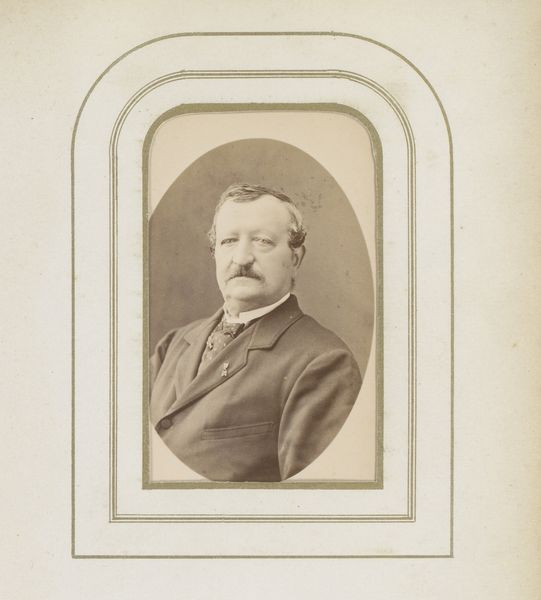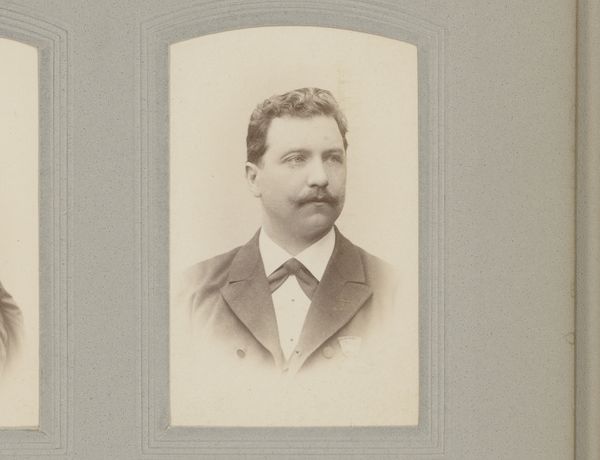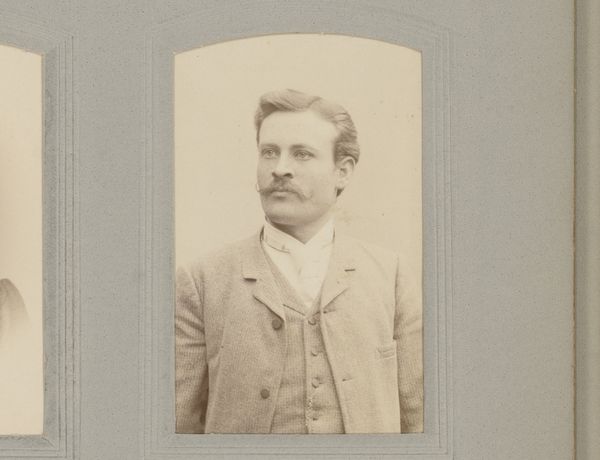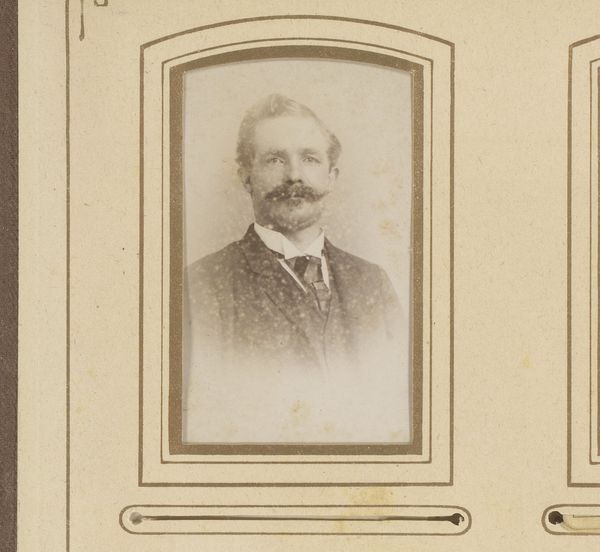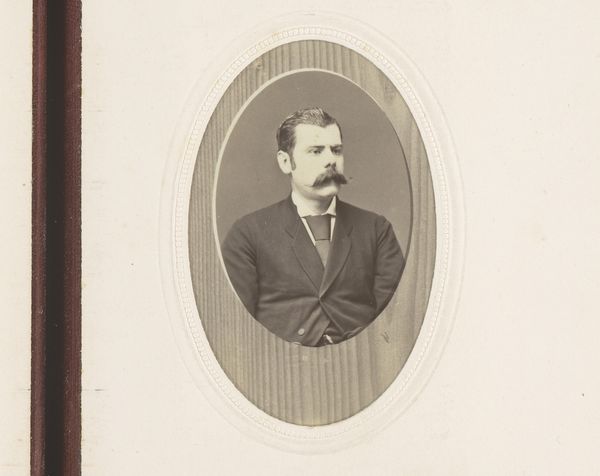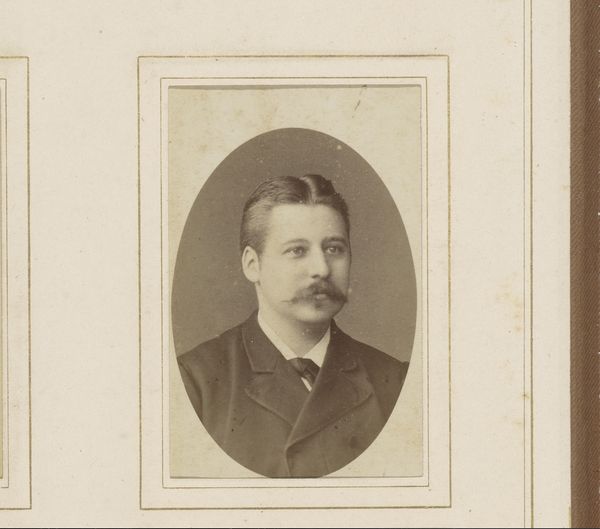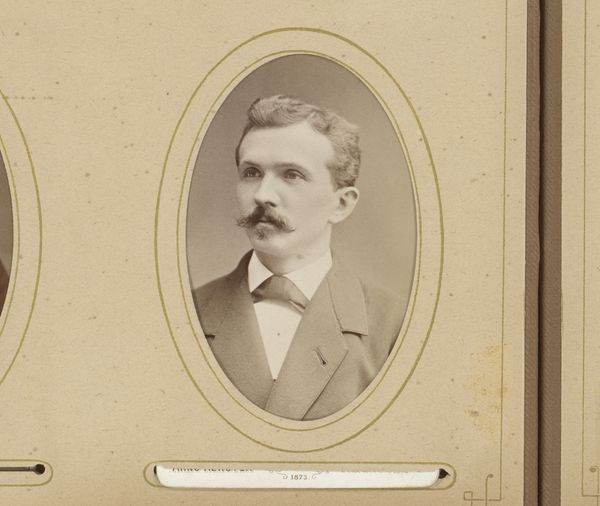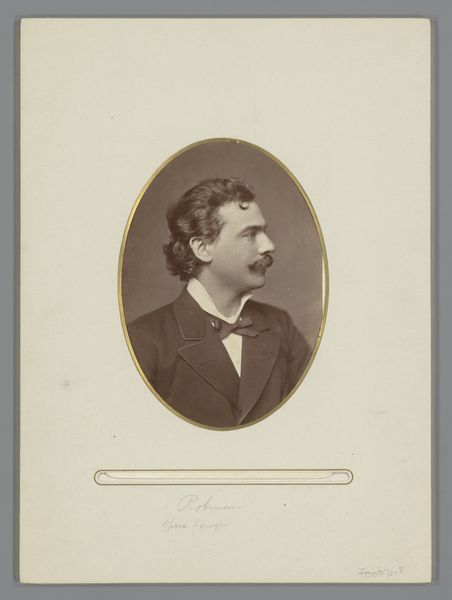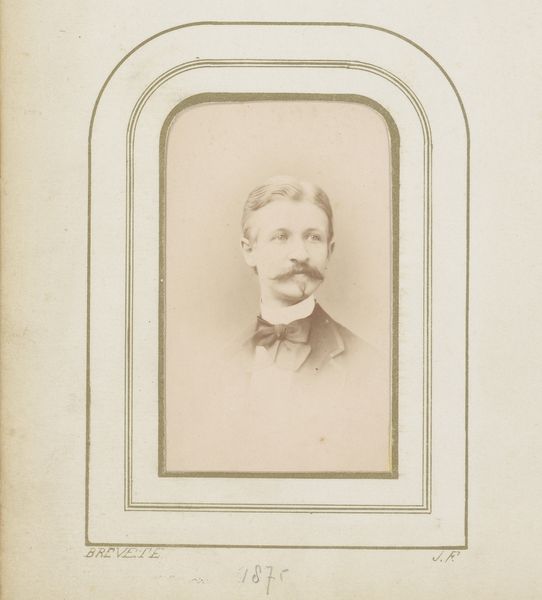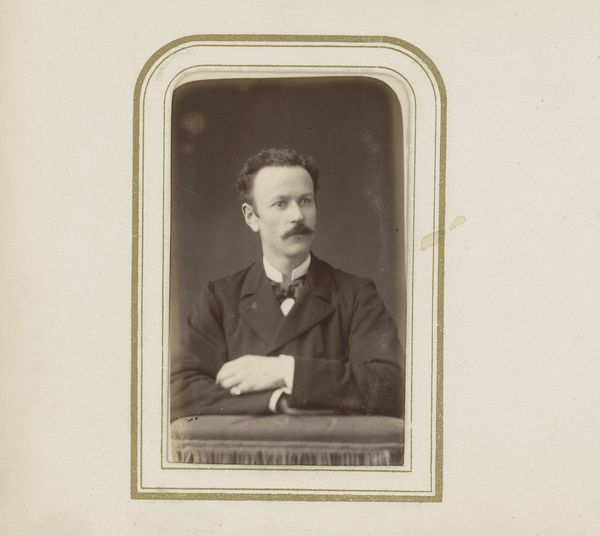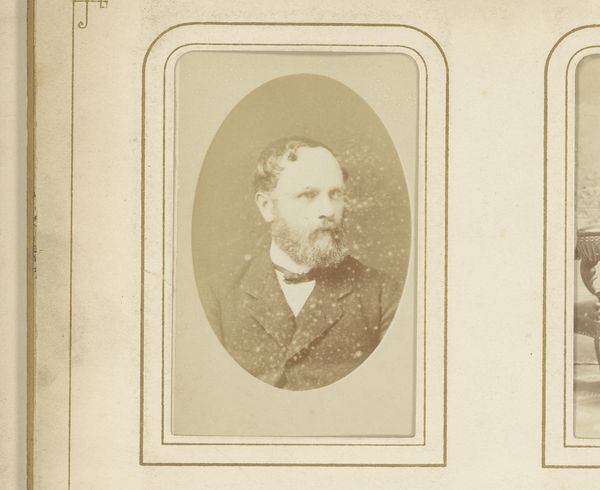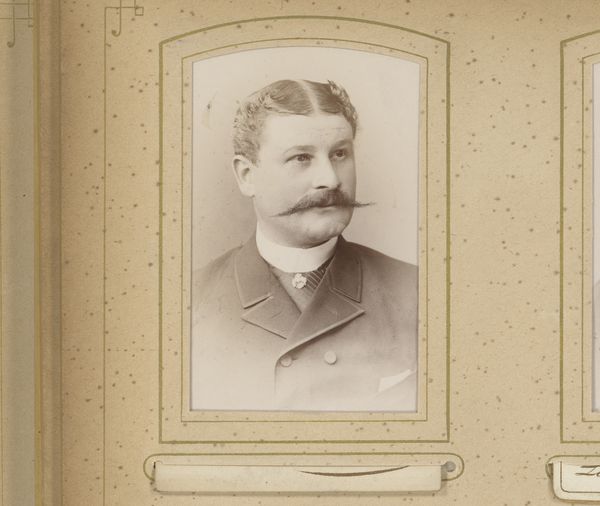
photography, gelatin-silver-print
#
portrait
#
16_19th-century
#
photography
#
historical photography
#
gelatin-silver-print
#
19th century
#
academic-art
Dimensions: height 99 mm, width 60 mm
Copyright: Rijks Museum: Open Domain
Editor: This is "Portret van Konrad Behrend Behrens" from sometime between 1855 and 1890, by Johannes Jaeger. It’s a gelatin-silver print – part of a photo album, I think? The sitter looks very respectable, in his suit and tie. How would you interpret this portrait, with its classic style? Curator: Well, let's consider the context. This image is a gelatin silver print from the mid-to-late 19th century, placing it firmly within the rise of photography as a tool for documentation and social representation. Who was Konrad Behrend Behrens, and what did it mean to have one's portrait taken at this time? Editor: I don't know much about him! What are you getting at? Curator: Photography, in its early days, was largely reserved for the middle and upper classes. To commission a portrait was a statement of status, of belonging to a particular social strata. Consider the composition, the subject's clothing, and overall presentation. What do these elements suggest about the societal expectations and power dynamics at play? Does the portrait celebrate the individual or reinforce established social norms? Editor: I see what you mean. It feels like both, actually. The portrait shows him as an individual, but he’s also confirming to what’s expected. It makes you think about what isn’t being shown as much as what is. Curator: Precisely. This photograph opens a dialogue. What stories aren’t these images telling? Whose stories were excluded from this visual record? Thinking critically about these absences helps us challenge the dominant narratives perpetuated by historical representations. Editor: That’s such a good way to look at it. It really challenges you to look at the past with fresh eyes and consider who has a voice. Curator: Indeed. And hopefully inspires us to amplify the voices that were historically silenced.
Comments
No comments
Be the first to comment and join the conversation on the ultimate creative platform.
